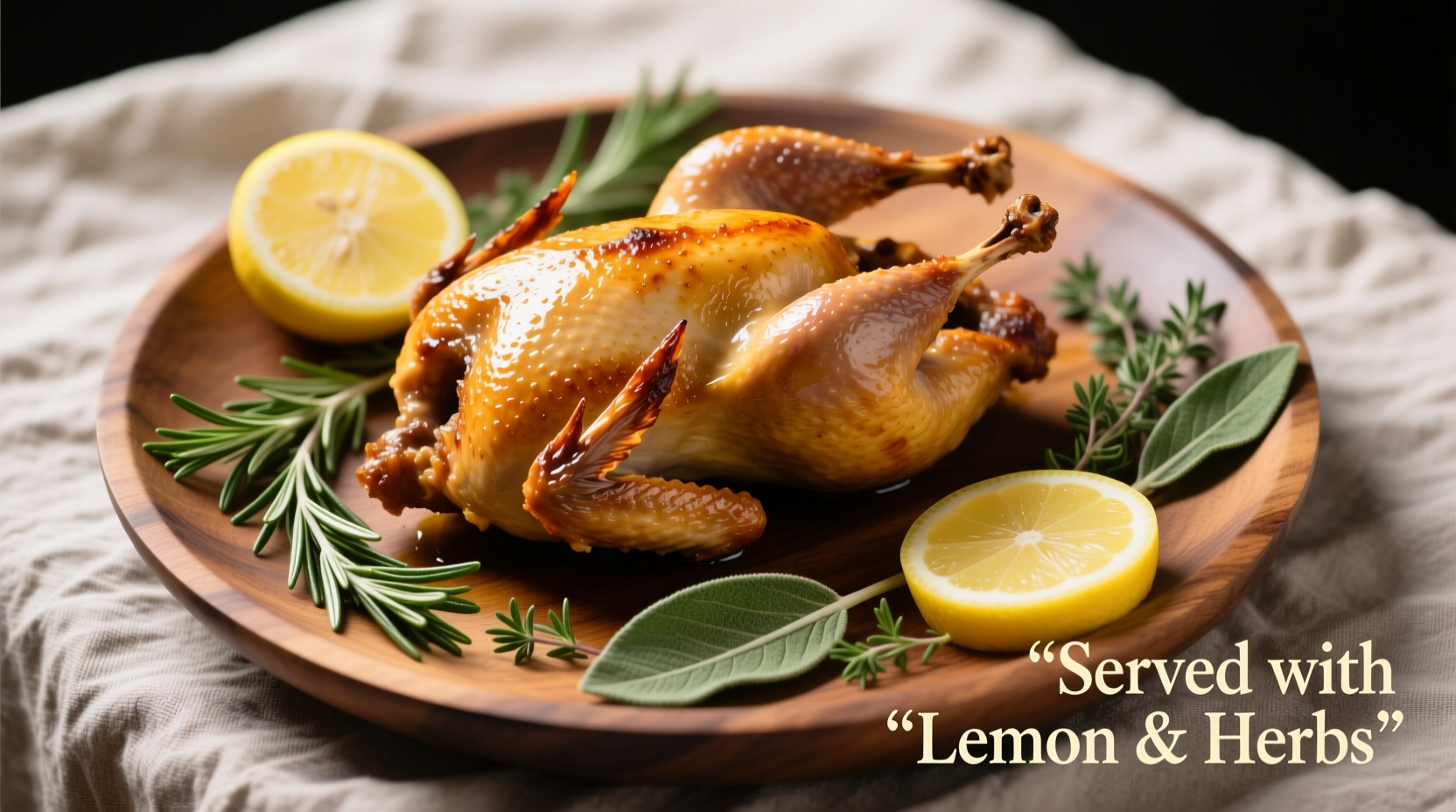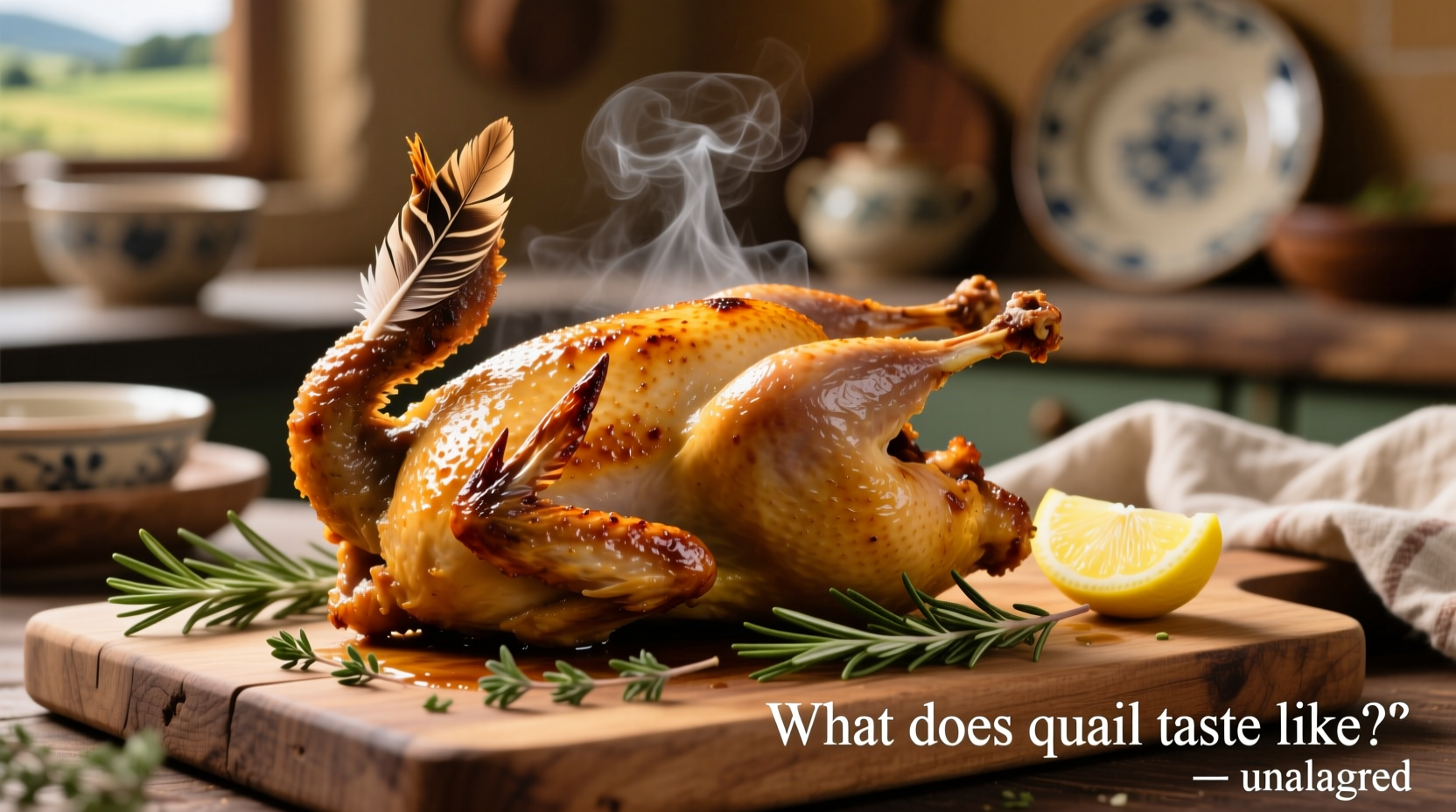Curious about adding this elegant bird to your menu? Understanding quail's unique taste profile helps you make informed decisions whether you're dining out or cooking at home. Unlike common poultry, quail delivers a sophisticated flavor experience that elevates any meal when prepared correctly.
Quail Flavor Profile: What Sets It Apart
Quail meat offers a distinctive culinary experience that sits between chicken and duck on the flavor spectrum. The breast meat is remarkably tender with a fine grain, while the dark meat carries subtle earthy notes that many describe as mildly gamey without being overpowering. This delicate gameiness comes from the bird's natural diet and active lifestyle, particularly in wild varieties.
Compared to chicken, quail has a richer, more complex flavor profile with slightly higher fat content in the dark meat portions. The meat's natural moisture gives it a buttery quality when properly cooked, though it can become dry if overcooked due to its small size and lean composition. Professional chefs often describe farm-raised quail as having a clean, delicate taste that readily absorbs marinades and seasonings.
| Poultry Type | Flavor Intensity | Gamey Notes | Texture | Best Cooking Methods |
|---|---|---|---|---|
| Quail | Moderate | Mild to moderate (varies by diet) | Tender, fine-grained | Searing, roasting, grilling (8-12 minutes) |
| Chicken | Mild | None | Firmer, coarser | Versatile (20-45 minutes) |
| Duck | Strong | Pronounced | Fattier, denser | Slow roasting, confit (45-60 minutes) |
| Pheasant | Strong | Distinctly gamey | Drier, coarser | Braising, pot-roasting (30-45 minutes) |
Factors That Shape Quail's Unique Taste
Several elements influence how quail tastes, making each experience potentially different:
Wild vs. Farm-Raised Quail
Wild quail typically exhibits more pronounced gamey flavors due to their diverse natural diet of seeds, insects, and vegetation. Farm-raised quail, commonly available in markets, have a milder taste profile because of controlled feeding. According to agricultural studies from the USDA National Institute of Food and Agriculture, commercially raised quail fed standardized diets produce meat with consistent flavor characteristics that appeal to broader palates while maintaining the bird's distinctive qualities (nifa.usda.gov).
Cooking Methods and Their Impact
Quail's small size requires precise cooking techniques to preserve its delicate flavor. High-heat methods like searing or grilling work best, typically requiring only 8-12 minutes total cooking time. Overcooking quickly dries out the lean meat, diminishing its natural buttery quality. Professional chefs recommend cooking quail to 145°F internal temperature for optimal tenderness—a practice supported by food safety guidelines from the Food and Drug Administration (fda.gov/food).
How to Enhance Quail's Natural Flavor
Quail's delicate taste pairs beautifully with complementary ingredients that enhance rather than overwhelm its natural profile:
- Citrus accents: Lemon or orange zest cuts through richness while highlighting subtle earthy notes
- Herb combinations: Thyme, rosemary, and sage work particularly well with quail's flavor profile
- Wine pairings: Lighter reds like Pinot Noir or full-bodied whites like Chardonnay complement quail beautifully
- Serving suggestions: Present whole roasted quail with seasonal vegetables for an elegant presentation
When preparing quail at home, remember that less is often more. Simple seasoning allows the meat's natural qualities to shine. Many culinary experts recommend dry brining quail for 1-2 hours before cooking to enhance both flavor and moisture retention—a technique validated by research from the Culinary Institute of America's food science department.

What to Expect When Dining Out
In restaurants, quail often appears as a sophisticated menu option, particularly in French, Middle Eastern, and Asian cuisines. French preparations typically feature herb-crusted roasted quail, while Middle Eastern restaurants might serve it with pomegranate molasses. Asian interpretations often include quail in tea-smoking preparations or as part of elaborate banquet dishes.
When ordering quail at a restaurant, expect to pay a premium price reflecting the bird's specialty status. Most establishments serve one whole quail per person as an entrée, though some may feature it as part of a tasting menu. If you're trying quail for the first time, ask your server about preparation methods—the cooking technique significantly impacts the final flavor experience.
Is Quail Right for Your Palate?
For those wondering whether quail's taste profile suits their preferences, consider these points:
- If you enjoy chicken but find it bland, quail offers a more complex flavor without overwhelming intensity
- If you appreciate duck but find it too rich, quail provides a middle ground with similar sophistication
- First-time quail eaters should start with farm-raised varieties for the mildest experience
- Those sensitive to gamey flavors might prefer quail prepared with sweet or acidic elements to balance earthiness
Understanding what does quail taste like compared to chicken helps set appropriate expectations. While both are poultry, quail delivers a more refined dining experience with distinctive characteristics that make it worth exploring for adventurous eaters and culinary enthusiasts alike.











 浙公网安备
33010002000092号
浙公网安备
33010002000092号 浙B2-20120091-4
浙B2-20120091-4